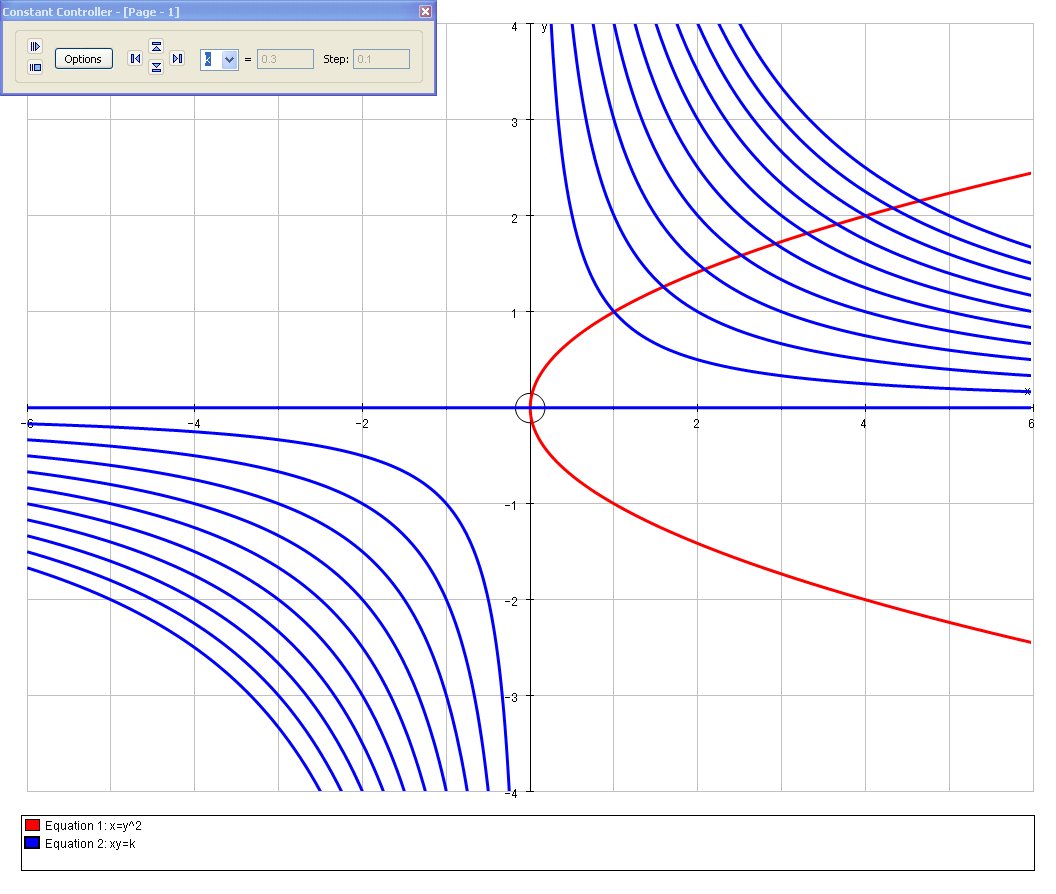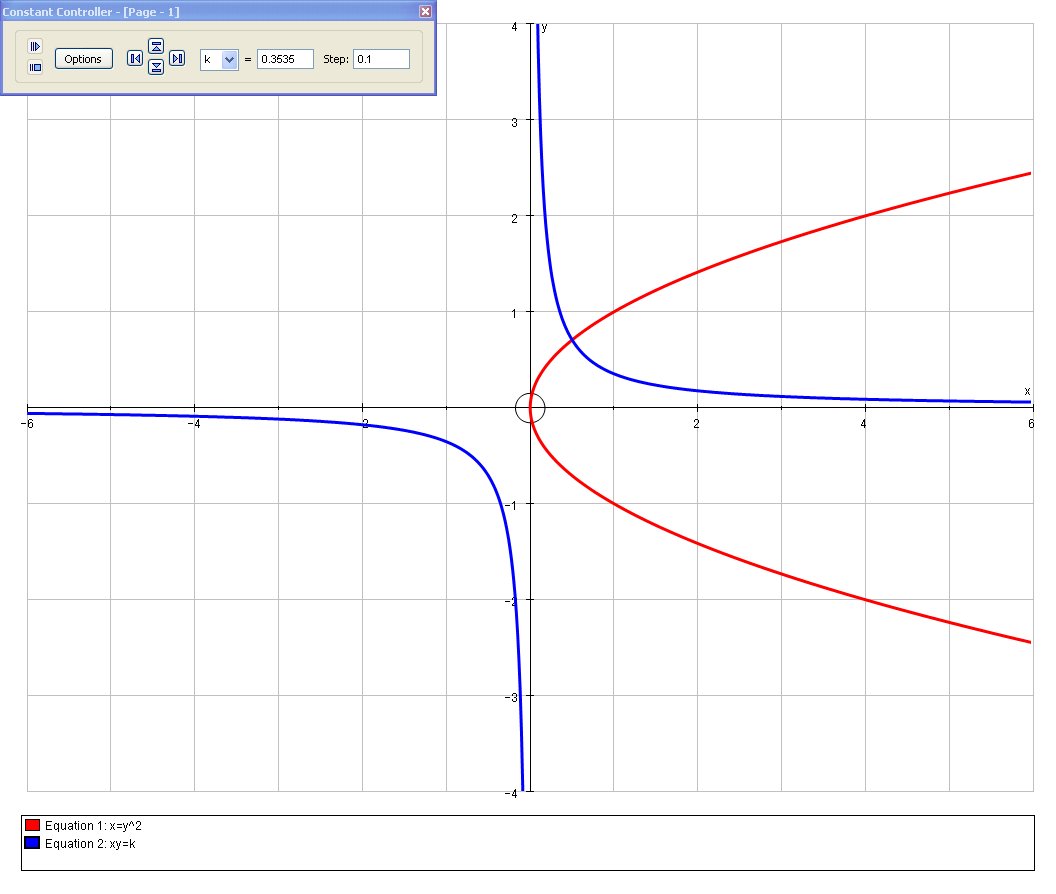Prove that the curves x = y^2 and xy = k cut at right angles if 8k^2 = 1?
2 Answers
Explanation:
the two curves are
and
for the curve
for the curve
the point at which the two curves meet is when
since
the point at which the curves meet is
when
the gradient of the tangent to the curve
when
the gradient of the tangent to the curve
We seek a condition of
If we examine the family of curves for various values of
 Steve M using AutoGraph
Steve M using AutoGraph
We note immediately that we are looking for a single point where the tangent are perpendicular so in general the curves are not orthogonal at all points.
First let us find the single coordinate,
{ (y^2=x, ......[A]), (xy=k, ...... [B]) :}
Substituting Eq [A] into [B] we get:
(y^2)y=k => y^3 = k => y = root(3)(k)
And so we establish the intersection coordinate:
P(k^(2/3), k^(1/3) )
We also need the gradients of the tangents at this coordinate. For the first curve:
y^2=x => 2y dy/dx = 1
So the gradient of the tangent,
(2k^(1/3))m_1= 1 => m_1 = 1/(2k^(1/3)) = 1/2k^(-1/3)
Similarly, for the second curve:
xy=k => y=k/x => dy/dx = -k/x^2
So the gradient of the tangent,
m_2 = -k/(k^(2/3))^2
\ \ \ \ \ = -k^(-1/3)
If these two tangents are perpendicular then we require that:
m_1m_2 = -1
:. (1/2k^(-1/3)) \ (-k^(-1/3)) = -1
:. k^(-2/3) = 2
:. (k^(-2/3))^(3/2) = 2^(3/2)
:. k^(-1) = 2^(3/2)
:. (1/k)^2 = 2^3
:. 1/k^2 = 8
Leading to the given result:
8k^2=1 \ \ \ QED
And with this value of
 Steve M using AutoGraph
Steve M using AutoGraph


